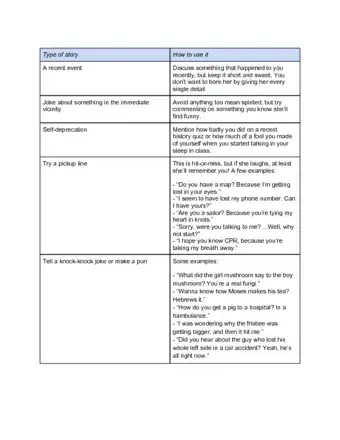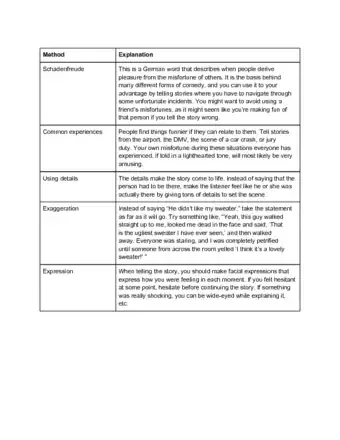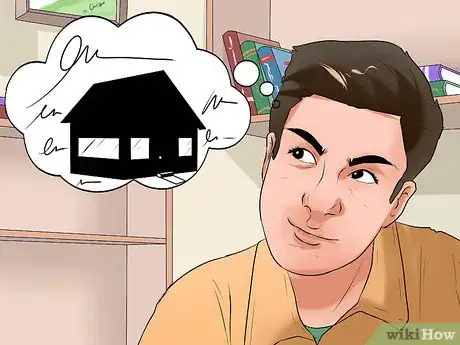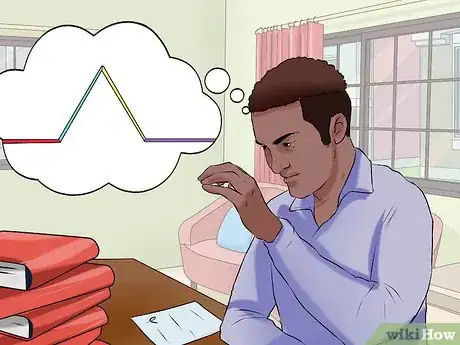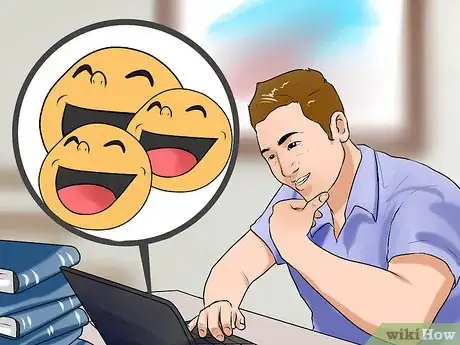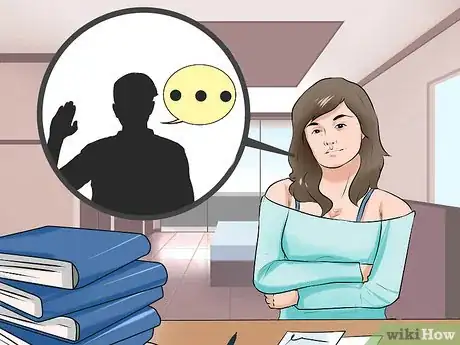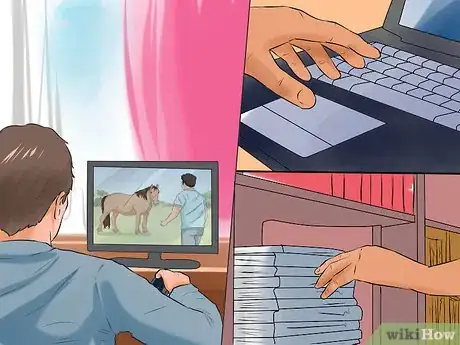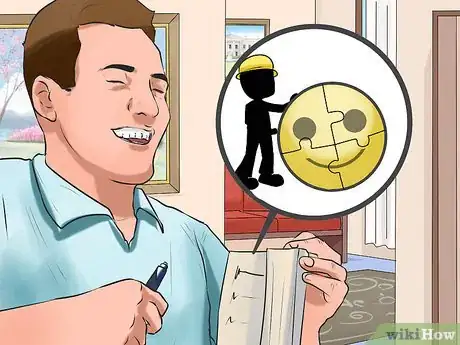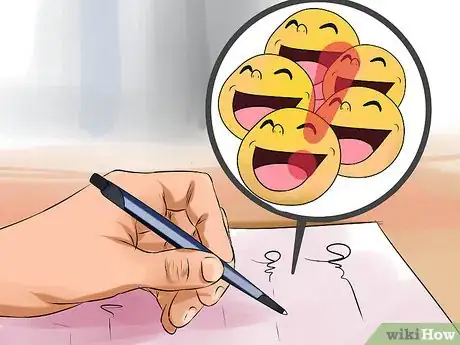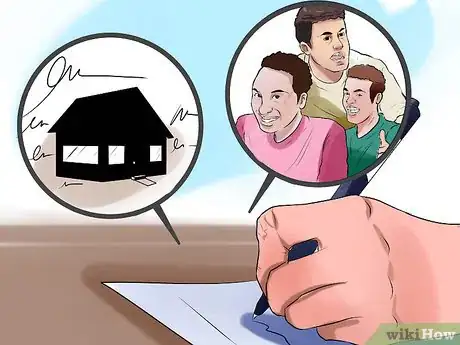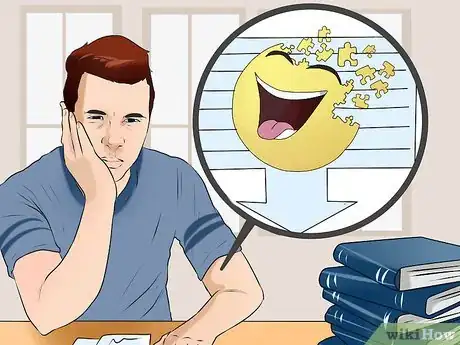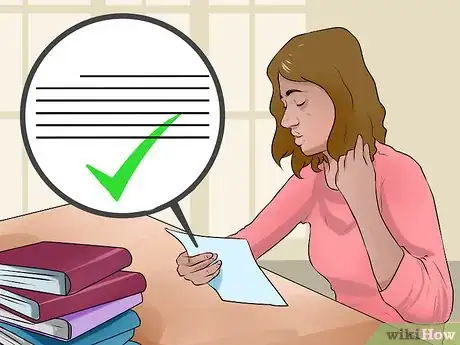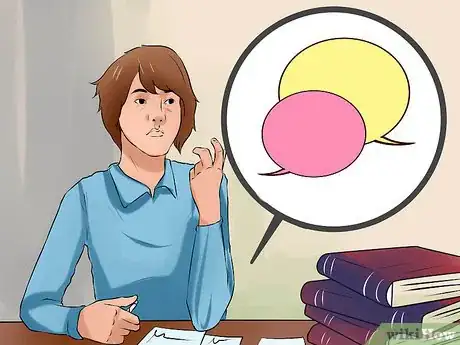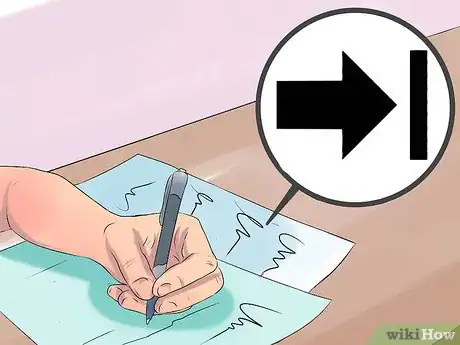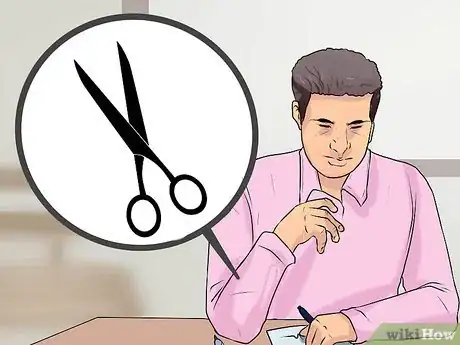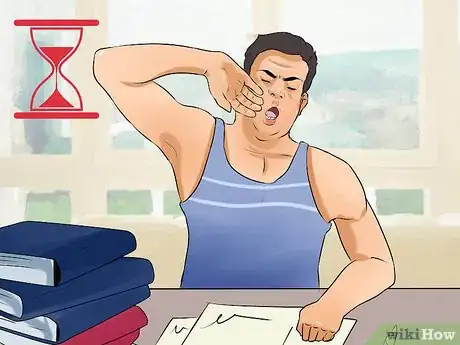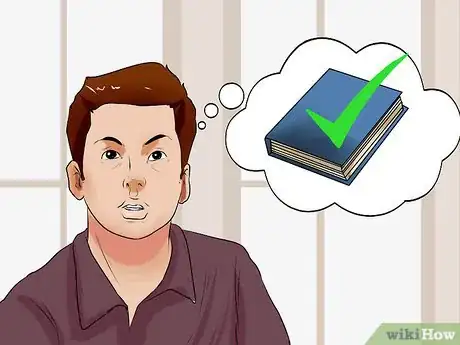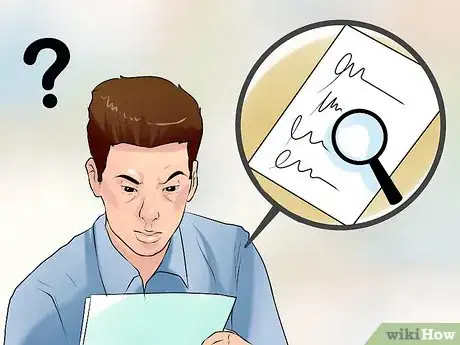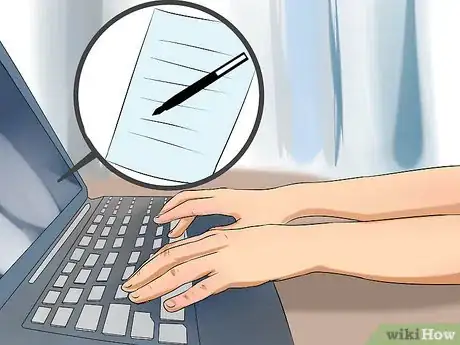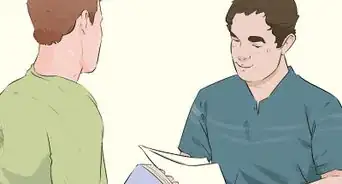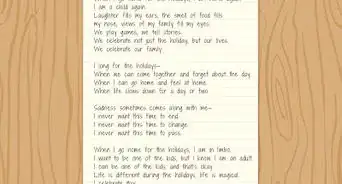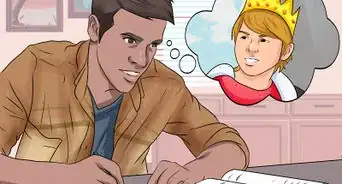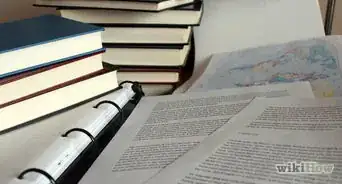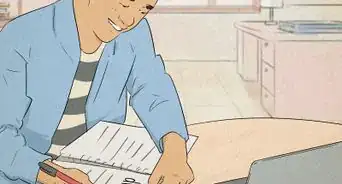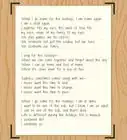This article was co-authored by Kendall Payne. Kendall Payne is a Writer, Director, and Stand-up Comedian based in Brooklyn, New York. Kendall specializes in directing, writing, and producing comedic short films. Her films have screened at Indie Short Fest, Brooklyn Comedy Collective, Channel 101 NY, and 8 Ball TV. She has also written and directed content for the Netflix is a Joke social channels and has written marketing scripts for Between Two Ferns: The Movie, Astronomy Club, Wine Country, Bash Brothers, Stand Up Specials and more. Kendall runs an IRL internet comedy show at Caveat called Extremely Online, and a comedy show for @ssholes called Sugarp!ss at Easy Lover. She studied at the Upright Citizens Brigade Theatre and at New York University (NYU) Tisch in the TV Writing Certificate Program.
There are 9 references cited in this article, which can be found at the bottom of the page.
This article has been viewed 181,076 times.
Writing a short, funny story can be an enjoyable experience. Humor can help defuse tense situations and bring people together with shared laughter, which can be very useful if the story involved is tense or upsetting. Whether you're writing an assignment for school or simply have a wild and funny story you need to tell through a written project, mixing comedy and writing can help you find an outlet for your creative urges. With a short, funny story, you can also express your sense of humor in less time than it might take to write a full-length story or novel.
Steps
Writing Help
Planning Out Your Story
-
1Decide on a setting. Some writers may prefer to plan out the plot before deciding on a setting. However, in comedic writing, humor is often based on situations. Before you start writing out the storyline for your work, it may be helpful to consider where your story might take place and how you can derive humor from that setting.[1]
- Try to be original in choosing your setting. Readers may be turned off if it's a setting they're too familiar with, as it may feel like the story has been recycled.
- Also, keep in mind that a vivid description of your setting will help reader to feel like they are there and this may help to make the story even funnier.
- For short stories, it's best to stick with as few setting changes as possible. Aim to work within just one setting, but don't exceed two.
-
2Come up with a plot. A plot is the most important component of any story. Plot is simply what happens in the story, who is involved, and how that series of events unfolds.[2]
- Most compelling stories have a beginning, middle, and end. Across that timeline there is a source of rising tension, a climax (breaking point of the tension), and an unraveling of tension that leads into the ending.
- Think about what the source of tension/drama will be, and try to work that tension into the specific setting you've chosen for the story.
- Consider how the source of tension can work with that setting. Perhaps the setting might heighten the tension, for example, or create a comedic situation by way of contrast with the location where the events unfold.
Advertisement -
3Plan out your characters. Every story needs interesting, realistic characters. A funny story needs interesting, realistic characters who either have funny qualities or who find themselves in funny situations.[3]
- How you depict the characters may depend on their personalities and circumstances within the story.
- For example, you might depict a bumbling "idiot" character who stumbles into funny situations, or a sarcastic character who thinks he knows it all and realizes that he doesn't know anything about his own circumstances.
- Make sure your characters are realistic and believable. A good character should have feelings/opinions and should be capable of reacting to his or her situation in realistic ways on the page.
- Think about what kinds of characters could make your setting funny, or vice versa. All the elements of your story (setting, plot, and characters) should ideally work together, either by mixing well or by creating funny and unexpected contrasts.
Incorporating Humor
-
1Draw humor from everywhere. As you plan out the humorous aspects of your short, funny story, it may be helpful to pull together things that you find funny from every aspect of your life.[4] It can be personal, political, cultural - whatever you find funny, jot down notes on the story (the actual plot), the situation (what your story is actually about - for example, the dynamics of friendship), and why you find it funny.[5]
- Try keeping a notebook of ideas and inspiration. Write down funny things you see and hear, or any ideas that come to mind.[6]
- Don't be afraid to draw on humorous elements of your own life and your friends' lives.[7]
- Your funny, short story doesn't need to be 100% autobiographical, but incorporating bits and pieces of awkward or funny situations from your own life can bring a sense of personality to your work.
- Keep up on current events. You may not end up writing a story about world news or celebrity gossip, but you may find inspiration or even ways to directly draw plot elements from real events that are culturally relevant.
-
2Have your own firm opinions and beliefs. Comedy requires a certain level of honesty on the part of the comedian. The same is true of writing, so it makes sense that you should be honest with yourself as a writer of short, funny stories. Before you sit down to write your story, you should have a firm sense of what you think/believe about the world so that your humorous observations and writing in general can stem from that element of yourself.[8]
- You wouldn't tell a political joke to your friends without taking some stance on the matter, so why try to be unbiased in your written humor?
- Don't be so abrasive that your humor would alienate people who disagree with you, but make sure that you at least know where you stand on certain issues so that you can find the situational humor in them.
-
3Look for inspiration. If you're struggling to write a short, funny story, it might be helpful to seek outside inspiration. Inspiration can come in many forms, but the best ways to get inspired for a project like this involve immersing yourself in funny stories (both written and visual).[9]
- Read funny stories. You can find stories by searching online, or by checking at your local library or bookstore.
- Watch funny movies and TV shows. Though it's not the same format as you're working with, you might still get some inspiration.
- As you watch and read things that entertain you, try to analyze the humor.
- Think about why you find certain things funny, consider the ways an author or script writer might have crafted those humorous elements on the page, and look for ways to adapt that style of humor to your own writing.
-
4Know how to construct a joke. If you intend to incorporate actual jokes into your writing, you should familiarize yourself with how comedians construct their jokes. You don't need to include jokes, but it's important to do it right if you're going to do it at all. A joke should be unambiguously funny and shouldn't require the reader to dwell on the joke in order to find it funny. Ideally, your joke should elicit laughter as soon as your reader finishes reading it.
- If you intend to deliver a punchline, make sure it goes at the end of the joke. Otherwise it might confuse readers and leave them wondering what the funny part is supposed to be.[10]
- Try putting together a list of two things that go together, then add a third seemingly unrelated thing. This is called the Rule of Threes.[11] [12]
- The third thing you list should be where the humor comes from. It may be funny because the third thing doesn't match the others, or because the third thing highlights some type of truth.
- As an example, you might say something like, "My doctor thinks I'm losing it. He told me his recommendation is to get more fresh air, get more exercise, and stop calling him at 3:00 AM asking what's wrong with me."
-
5Use humor sparingly. It may sound strange to suggest that a funny story should use humor sparingly, but too much humor can ruin a story. You don't want to cram the humor down your readers' throats; it should be funny without feeling like a comedic attack.[13]
- Remember that a funny story should still have a functional plot with realistic characters and dialogue. You can't have a funny story just be joke after joke the whole time.
- Let the humor stem from the setting, characters, and situations, or some combination of them. If you're trying to cram too much humor into a story (even a funny story), it can make your writing feel like a corny gimmick.
Writing Your Story
-
1Establish your story's elements early on. In any story, you'll want to let the reader know who is involved, where the story takes place, and some hint of what the story is all about. This is true of funny stories as well, but with the added element of humor. Don't leave your readers guessing at anything for long, or they may not continue to read your story.
- The beginning of any short story should establish the setting and at least one character.
- Describe where the action is taking place, but try to make that description relevant. Find ways to draw tension and/or humor from the setting as much as possible.
- Think about how and when the humorous elements of your story will unfold, and try to at least hint at them from the onset of the story.
- Remember that a short story's beginning should set something up, whether it's tension, a source of humor within the story, or something that will be vital to the story at a later point.
-
2Make things get complicated and funny in the middle. The middle of a story is where things typically get complex. In a short, funny story, the middle should also provide a decent amount of humor, or at least a strong setup for something funny that is yet to come in the story.
- Your story's middle section will probably be the longest. Make your words count by making things get interesting for one or more characters in this section.
- Tension should complicate the lives of your most important characters and form the basic arc of your story.[14]
- Tension often arises from conflict, usually between the protagonist and another person, himself/herself, nature, technology, society, or God/gods/goddesses.
- You may want to incorporate humor that's derived from the tension, or you may choose to deliver humor as a sort of comic relief that accompanies the tension so that it doesn't get too serious.
-
3Wrap things up with a short ending. When writing in short form, you won't have a lot of space on the page for long, drawn-out resolutions. Things need to get wrapped up in a timely manner, and the humor should really come through at this point (especially if you used the middle section to build up the humor).
- Tension should unravel fairly quickly. The humor may stem from this unraveling, or it may accompany it along the way.
- Aim to be concise with your ending. Remember that while you're working within the frame of a short, funny story, you may have to trim things down to their essence.
- Try to keep the story's ending a paragraph or so at most, and make sure the reader finds some sense of humor and relief by the last sentence.
-
4Create realistic dialogue. Now that you have realistic characters, you'll need to make them speak in realistic ways. A good sign of strong writing is that the readers can hear the dialogue and not think to themselves, "This is a work of fiction."[15]
- Think about the way people talk with one another. Read your written dialogue out loud and ask yourself, "Do people actually say things like that?"
- Good dialogue should push the narrative forward. Avoid being redundant or stating the obvious.
- Strong dialogue shows a lot about each character's personality (including how he/she interacts with and treats other people).
- Don't bog down your dialogue tags (the actions that accompany spoken lines) with details. For example, instead of saying, "'What should we do?' he asked, staring nervously and compulsively at the ground, careful to avoid her eyes," try something simple like, "What should we do?" he asked without lifting his eyes from the ground."
-
5Cover your subject completely in a short space. This is one of the most difficult aspects of writing short stories. On the surface, you might think writing a longer form (like a book) would be more difficult than a short story, but a good short story must accomplish the same tasks as a longer book within a short amount of space. Everything needs to come together by the end, and on top of everything else your short, funny story needs elements of humor.[16]
- You may have grand ideas about a subject for your story. However, you need to remember that when you're writing a short, funny story, you're limited on space. Stick to 1 conflict and no more than 2 settings to help keep your story focused and brief.
- Don't leave your idea unexplored or unfulfilled. Make sure your story fully analyzes the subject/idea you write about by the ending.
- You can always trim down nonessential elements and words to make a story shorter.
- You'll know that the idea has been fully explored when you've said (either directly, or indirectly by depiction) everything you need to say about it.
- For example, you'd need a lot of space to adequately cover the complexity of human relationships. But you can capture a moment between two people and write about some aspect of friendship (like forgiving your friends for saying/doing hurtful things) within a short, funny story.
-
6Focus on the essentials while you write. It may be difficult to approach writing a short, funny story if you're not familiar with writing shorter works. Whether you choose to condense a longer story or expand a brief one, make sure that you focus on the most important elements of that story as you write it.[17]
- Some people prefer to write a longer story and then shave it down. This ensures that the story is complete.
- Other writers prefer to start small and expand as needed. This can make brevity more easy to work with and save you the stress of deciding what makes the final cut.
- There's no right or wrong way to craft a short, funny story, so go with whatever feels more comfortable to you.
- Whichever approach you take, make sure your story is complete, your ideas and characters are well-developed, and the humor is delivered in a satisfying way.
Revising Your Story
-
1Set aside your story before revising. The worst thing you can do when you revise a story is to jump into revision immediately after you've finished writing it. You need some time away from the project so that it's not so fresh in your head, and (ideally) so that you're not so attached to every detail of the story.[18]
- Give yourself at least a week or 2 between finishing the story and revising it. If possible, try to give yourself a month to really put some distance between you and your story. No matter what you decide, stick with your revision plan!
- Consider asking a trusted friend or relative to look at the story. Ask him/her to be honest and critical, and emphasize that you want to know what isn't working and why.
- Looking at a story with fresh eyes will help you see more errors that you might have missed. When the story is fresh in your head it's easy to fill in the gaps with what you know, and you may not realize that that information isn't addressed on the page.
- Giving yourself some time before revising will also make it easier to cut things out. You may be in love with a scene, but after setting it aside for a few weeks, you might realize that it isn't as relevant as you thought it was.
-
2Remind yourself what you wanted to accomplish. What was the point of your funny story? Were you trying to highlight a real social situation? Address some aspect of human nature? Draw humor from personal situations/experiences? Whatever your intentions, it's a good idea to refresh that intention in your head before you proceed with the revision process.[19]
- By having your original intentions for the story in mind, you'll know what you had hoped to do with the story and will be able to assess whether you accomplished that goal or not.
- Think about whether the tone matches your intentions, as well as the overall events of the story.
-
3Clarify anything that's confusing. This is an important part of why you should approach the story after setting it aside for a period. When you've just finished writing a story, you're less likely to catch any issues that might otherwise confuse a reader. However, if you've given yourself some time, you should notice your mistakes.
- Confusion may arise from the content of the story (or lack thereof), or it may result from a missing or poorly executed transition. Transitions should bridge one scene to the next, one chapter to the next, and so on.
- A good transition wraps up the previous scene and gently guides the reader into the new one.
- An example of a transition between two scenes might be something like, "He watched her walk silently into the night until she faded into darkness. The next morning he kept looking towards the horizon, but he knew she'd be halfway home by then."
- You may want to ask a friend to read through your story and look for anything that's confusing or doesn't make sense.
-
4Edit your story for mistakes. Editing should be considered a separate step from revision. Revising your story involves rewriting parts as needed and trimming out things that don't work. Editing, on the other hand, mostly involves fixing your line-level mistakes.
- Look for spelling errors, grammar/syntax errors, run-on sentences, sentence fragments, punctuation errors, and any weak lines of dialogue.
- Use the spellcheck function on your computer, or ask a friend with strong editing skills to take a look at your story.
- Try reading the story out loud. Sometimes hearing a mistake out loud can help you catch it better than just reading it silently on the page.
Expert Q&A
-
QuestionHow can I write a story ending with the statement "whenever I remember this, I start laughing"?
 Christopher Taylor, PhDChristopher Taylor is an Adjunct Assistant Professor of English at Austin Community College in Texas. He received his PhD in English Literature and Medieval Studies from the University of Texas at Austin in 2014.
Christopher Taylor, PhDChristopher Taylor is an Adjunct Assistant Professor of English at Austin Community College in Texas. He received his PhD in English Literature and Medieval Studies from the University of Texas at Austin in 2014.
English Professor The story should probably detail a situation that was funny, so try to make the funny part the climax of the story. Build a plot around this funny moment.
The story should probably detail a situation that was funny, so try to make the funny part the climax of the story. Build a plot around this funny moment. -
QuestionWhat are some good examples of a short, funny story?
 Christopher Taylor, PhDChristopher Taylor is an Adjunct Assistant Professor of English at Austin Community College in Texas. He received his PhD in English Literature and Medieval Studies from the University of Texas at Austin in 2014.
Christopher Taylor, PhDChristopher Taylor is an Adjunct Assistant Professor of English at Austin Community College in Texas. He received his PhD in English Literature and Medieval Studies from the University of Texas at Austin in 2014.
English Professor Try checking out Margaret Atwood's "There Was Once," Mark Twain's "Luck," or James Thurber's "The Secret Life of Walter Mitty."
Try checking out Margaret Atwood's "There Was Once," Mark Twain's "Luck," or James Thurber's "The Secret Life of Walter Mitty." -
QuestionHow can I choose what type of story I want to write?
 Community AnswerGet 3 jars and a lot of paper. Label each jar: "Setting," "Characters," and "Time." Write a bunch of suggestions for each, then draw randomly from each jar.
Community AnswerGet 3 jars and a lot of paper. Label each jar: "Setting," "Characters," and "Time." Write a bunch of suggestions for each, then draw randomly from each jar.
Warnings
- Never steal another person's work. That includes jokes, as well as pieces of writing.⧼thumbs_response⧽
Things You'll Need
- Paper
- A pencil
- A laptop/computer (optional)
References
- ↑ http://www.writerswrite.com/journal/jul99/writing-comedy-sketches-that-sell-7994
- ↑ http://jerz.setonhill.edu/writing/creative1/shortstory/
- ↑ http://www.helpingwritersbecomeauthors.com/how-to-write-funny-dialogue-what-i-learned-writing-storming/
- ↑ Kendall Payne. Writer, Director, & Stand-up Comedian. Expert Interview. 3 April 2020.
- ↑ http://www.writersdigest.com/online-editor/18-tips-for-aspiring-tv-comedy-and-joke-writers
- ↑ Kendall Payne. Writer, Director, & Stand-up Comedian. Expert Interview. 3 April 2020.
- ↑ Kendall Payne. Writer, Director, & Stand-up Comedian. Expert Interview. 3 April 2020.
- ↑ http://www.writersdigest.com/online-editor/18-tips-for-aspiring-tv-comedy-and-joke-writers
- ↑ http://www.writersdigest.com/online-editor/18-tips-for-aspiring-tv-comedy-and-joke-writers
- ↑ http://www.writersdigest.com/online-editor/18-tips-for-aspiring-tv-comedy-and-joke-writers
- ↑ http://www.writersdigest.com/online-editor/how-to-mix-humor-into-your-writing
- ↑ Kendall Payne. Writer, Director, & Stand-up Comedian. Expert Interview. 3 April 2020.
- ↑ http://www.writersdigest.com/online-editor/how-to-mix-humor-into-your-writing
- ↑ http://jerz.setonhill.edu/writing/creative1/shortstory/
- ↑ http://jerz.setonhill.edu/writing/creative1/shortstory/
- ↑ http://storyaday.org/writing-flash-fiction/
- ↑ http://storyaday.org/writing-flash-fiction/
- ↑ http://www.writersdigest.com/editor-blogs/guide-to-literary-agents/6-keys-to-revising-your-fiction-2
- ↑ https://thewritingplace.wordpress.com/2009/09/17/revising-a-story-step-by-step/
